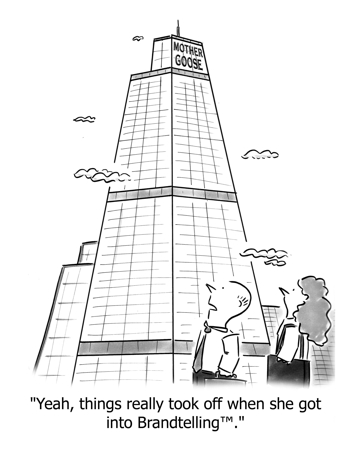You know, Valentine’s Day is just under a month away now, so I thought it might be time to examine a little cartoon love, Andertoons style:
This cartoon came while I was drawing a completely different cupid cartoon. The person having just been shot had all these little hearts around, and for whatever reason my head all of a sudden related them to the hearts on playing cards.
Now that I look at this I think I could’ve used a few spade symbols too. I’m pretty happy with the guy’s face though. He looks all confused and a little irritated. And if that’s not love I don’t know what is.
I will never understand the appeal of those icky dry little candy hearts with stuff printed on them. I know every year there’s a report of the newest phrase ("Tweet Me" etc…), but were I them I’d concentrate on making the things edible instead.
Still, they do make for a good cartoon.
I’m not what anyone would consider stylish. I’m more of a jeans and flannel kinda guy. But I seem to remember not too long ago that the afro made a short-lived comeback? Is that right, or have I just been watching too many MST3K 70’s movies?
In any case, cartoon afros are really fun to draw!
Not only am I not stylish, I was never what you’d call good with girls.
I was the average looking but funny guy that girls liked to hang around with, but never wanted to, you know, really hang around with. Hint hint.
It all ended up OK, of course; I have a wonderful wife and two great kids, but I swear the platonic fairy followed me around for a good few years.
I gotta say, this kind of cartoon is awkward to write. I’m coming at it from the woman’s point of view, but, being a guy, I’m mostly guessing here.
You do hear this sort of thing fairly often, and for the most part I would assume it ends badly. But probably not as badly as above.
Also, that salt shaker guy must be really spacey, or maybe hard of hearing.
This is one of those cartoons that as a cartoonist it’s better not to linger on, because when you do there’s a lot of problems:
- What dating service has "Dating Service" on a sign on a worker’s desk?
- Is the Cupid for shooting the woman, or for here to take with?
- Where’s the customer’s right arm?
See what I mean? Let’s just move on…
This cartoon I really like, mostly because it’s a change of pace art-wise.
I tend to do cartoons in batches of similar themes. I might do a bunch of business cartoons one day, or maybe half a dozen kids/family cartoons. So when I was drawing Cupid after Cupid after Cupid for a Valentine’s Day batch, it struck me that you always see the same arrow in the chest idea used. Then I just twisted it a bit for the cartoon you see above.
Makes you wonder too. Did it still work
OK, last one…
This is definitely more of a guy take on the whole love arrow thing. If I were a Cupid flying around all day I’d be looking for a way to challenge myself just to keep things interesting.
OK, so there’s an Andertoons look at cartoon love. Hope you enjoyed it! And don’t forget that cartoons work great in presentations, newsletters, whatever!











